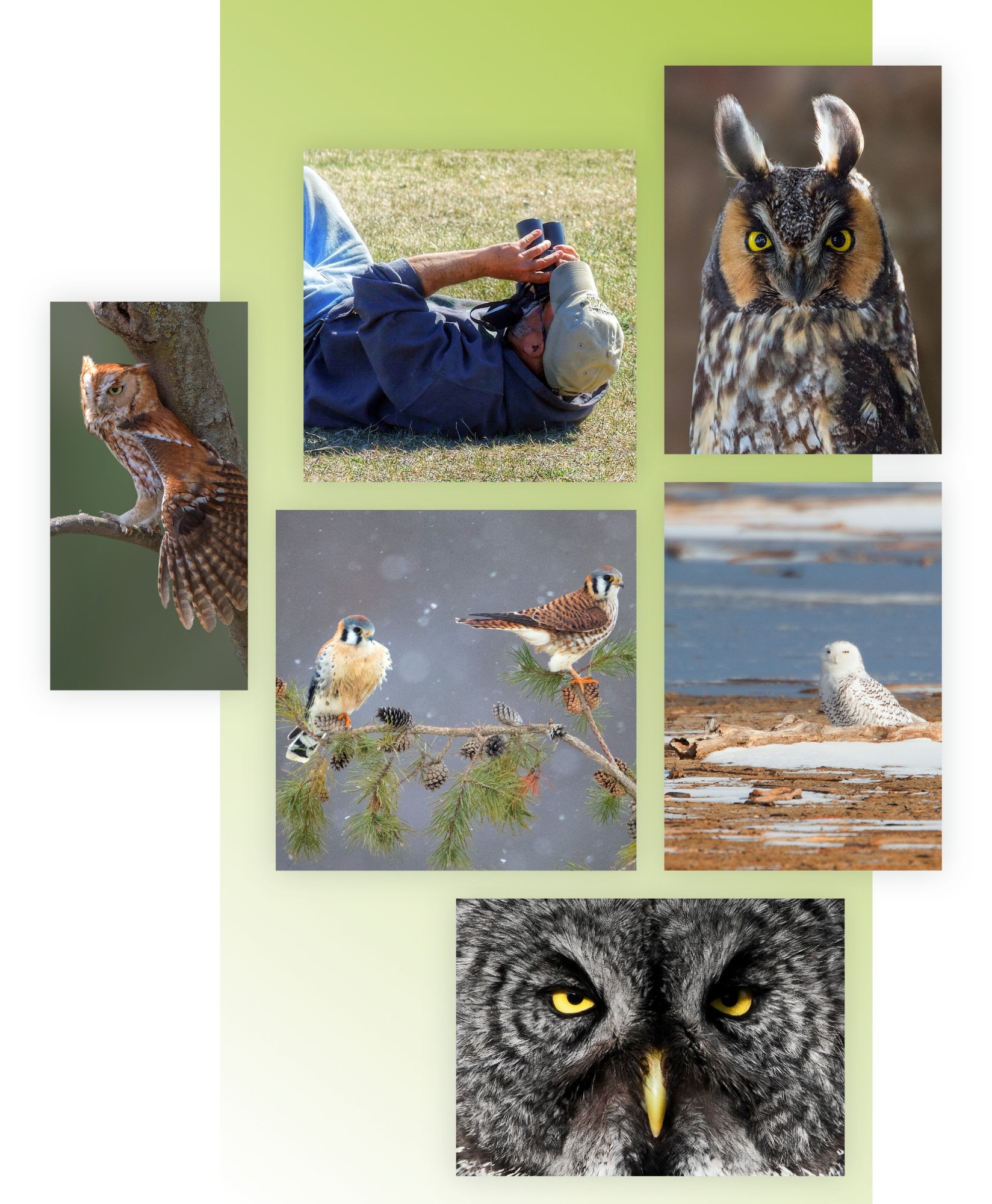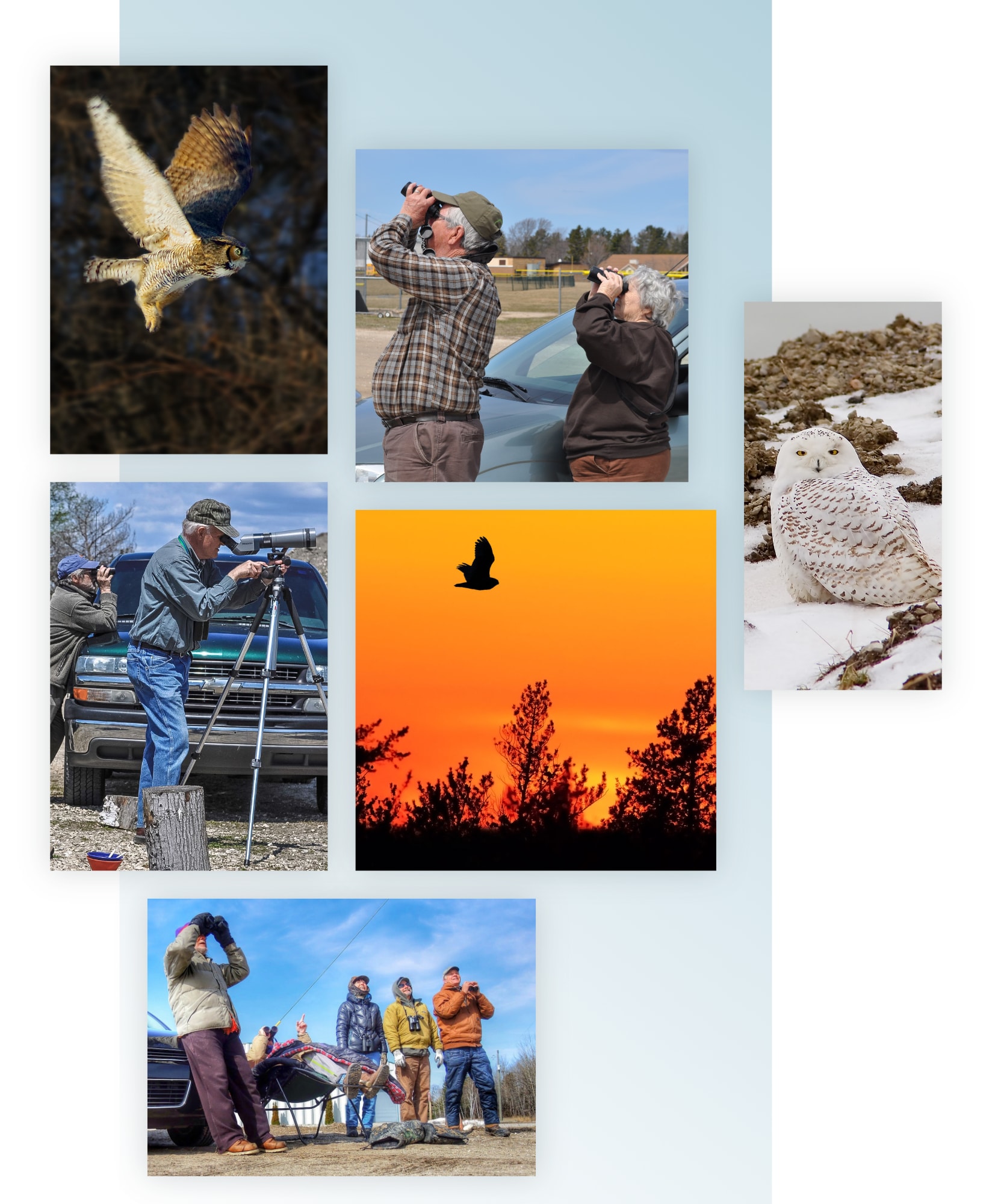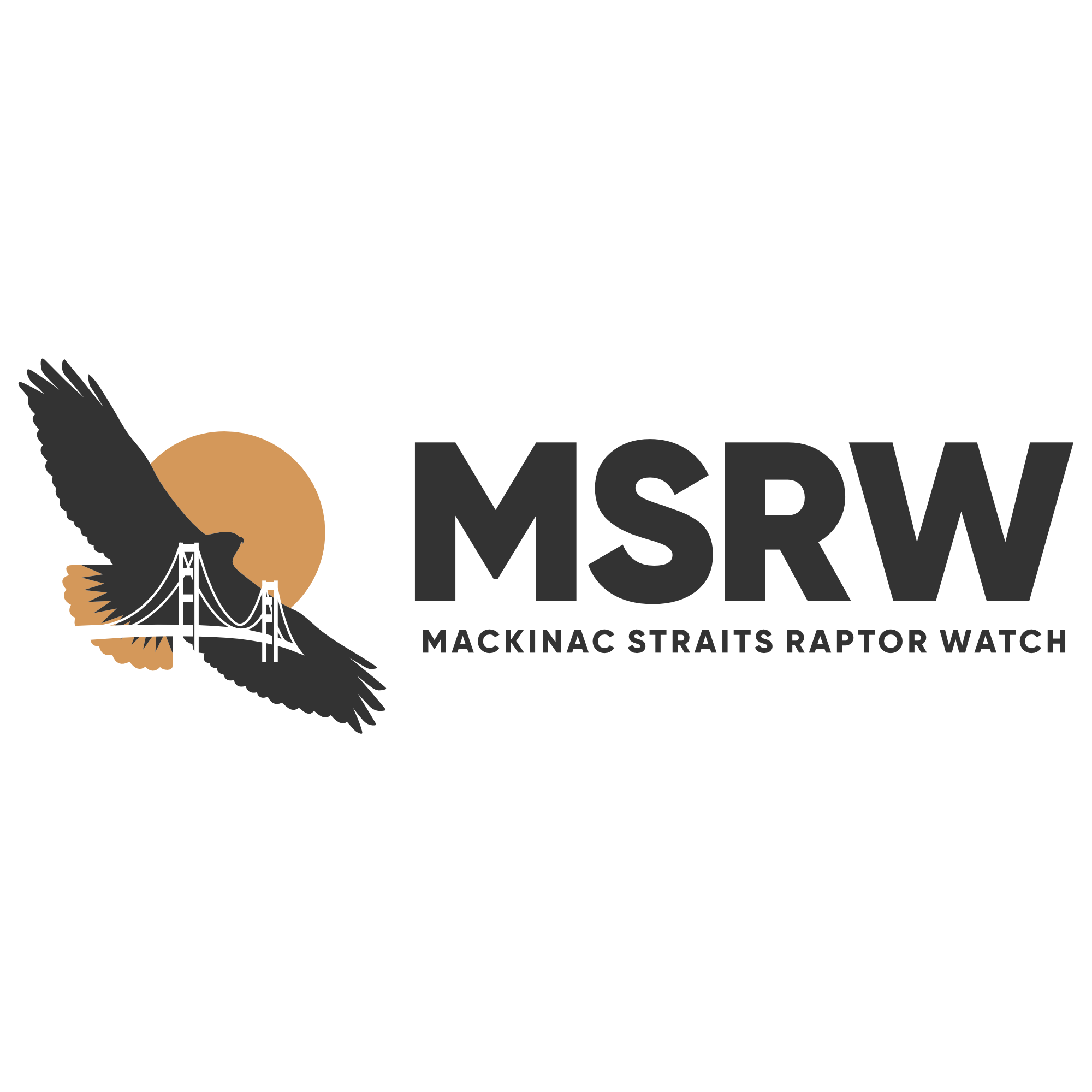What To Expect
Best Times to Observe Migrating Raptors:
Count + Migration Data:
We use the Dunkadoo app to record count data on a tablet or smartphone.
Data are submitted daily to the HMANA (Hawk Migration Association of North America) when a Wi-Fi connection is available.
Useful guides for identifying raptors in flight:
- Hawks In Flight, by Pete Dunne, David Sibley, and Clay Sutton
- Hawks, (Peterson Field Guide series) by Bill Clark and Brian K Wheeler
- The Sibley Guide To Birds, by David Allen Sibley
- Hawks on the Wing, (video) by Josh Haas
Suggested equipment to bring:
- Binoculars, Regular Size 7, 8, or 10 Power
- Spotting Scope 20x +
- Lawn Chair
- Sun Screen
- Warm, wind-proof clothes (Dress for 20 to 30 degrees colder along the straits, and it is nearly always windy)
Hints for distinguishing buteos vs. accipiters
- Buteos are larger hawks with short tails and a wider wingspan. They are often soaring, with spare and labored wing beats. They prey on rodents and other small mammals, rabbits, and smaller birds— example: Red-tailed Hawk.
- Accipiters are smaller, sleeker hawks with long slender tails and less imposing wingspans. They hunt closer to the ground or zipping through the trees, with short, rapid, bursting flaps punctuated by a glide. They prey on songbirds and small mammals and reptiles— examples: Sharp-shinned Hawk, Cooper’s Hawk.


Hawkwatch
Spring
Period of Observation:
We count raptors from March 5th to June 5th. Hawks move or migrate during the middle of the day when the sun has warmed the ground to form thermal currents, or updrafts. These are general guidelines, and depending on weather conditions, movements may occur earlier or later in the day.
- In March, from 10 a.m. to 4 p.m.
- In early-April, from 9 a.m. to 4 p.m.
- In mid-April, from 9 a.m. to 5 p.m.
- In late-April and May, from 9 a.m. to 6 p.m.
Detection:
In March and early-April, most raptors fly between the canopy height and 500 feet high, so they are visible to the naked eye.
From mid-April through May, some raptors will be riding much higher thermals when approaching the Straits, and will not be visible with the naked eye. The use of binoculars will help detect these high kettles of migrating raptors.
Fall
Period of Observation:
We count raptors from August 20th to November 10th. Hawks move or migrate during the middle of the day when the sun has warmed the ground to form thermal currents, or updrafts. These are general guidelines, and depending on weather conditions, movements may occur earlier or later in the day.
- In late-August and September, from 9 a.m. to 4 p.m.
- In early and mid-October, from 10 a.m. to 4 p.m.
- In late-October and early-November, from 11 a.m. to 3 p.m.
Detection:
Early in the fall migration, most raptors fly between the canopy height and 500 feet high, so they are visible to the naked eye.
In October and November, some raptors will be riding much higher thermals when approaching the Straits, and will not be visible with the naked eye. The use of binoculars will help detect these high kettles of migrating raptors.
Migration Methods + Pathways:
Different species favor other methods or discreet pathways across the straits.
- Accipiters, Eagles, Osprey, Falcons, and Rough-legged Hawks often fly directly across the Straits without stopping over the shore to catch a thermal.
- Buteos, Red-tails and Broadwings usually catch a thermal before crossing.
Waterbird Count
Useful guides for identifying migrating waterbirds:
- Peterson Reference Guide to Sea Watching— Eastern Waterbirds in Flight
- The Sibley Guide to Birds, by David Allen Sibley
Suggested equipment to bring:
- Binoculars, Regular Size 7, 8, or 10 Power
- Spotting Scope 20x +
- Lawn Chair
- Warm, wind-proof clothes (Dress for 20 to 30 degrees colder along the straits, and it is nearly always windy)
Count + Migration Data:
If available, we are currently working with the Dunkadoo app to record all data daily. If there is a problem with Dunkadoo, we will record daily data on paper.
Dunkadoo – Waterbirds Spring 2022
A summary and comments will be posted in our blog three times per week on the News page of this site
Period of Observation:
Generally, waterbirds move in the morning for several hours, beginning before sunrise and again in the evening for a few hours before dark.
Our waterbird count begins 15 minutes before the official sunrise and continues for eight consecutive hours. An alternative schedule may be implemented with surveys for five straight hours starting at 15 minutes before official sunrise and three consecutive hours in the late afternoon ending at ½ hour after official sunset.
These are general guidelines, depending on weather conditions, waterbirds may move at other times, and the daily count time can be adjusted.
Detection:
Regular scanning of the lake, horizon, and overhead with binoculars is required.
Some species, e.g. Long-tailed Ducks, usually fly just above the water’s surface while others, e.g. Common Loons, usually fly high above the water. Previous observations in spring indicate Common Loons travel in a northwesterly direction across the tip of the lower peninsula as well as over water through the Straits. In fall, most Common Loons fly southeast through the middle of the Straits.
Poor viewing conditions, notably overcast skies, and hazy conditions, necessitate the use of characteristics such as silhouette and flight behavior to identify species. The books listed previously are good references for identification by shape and flight behavior.


